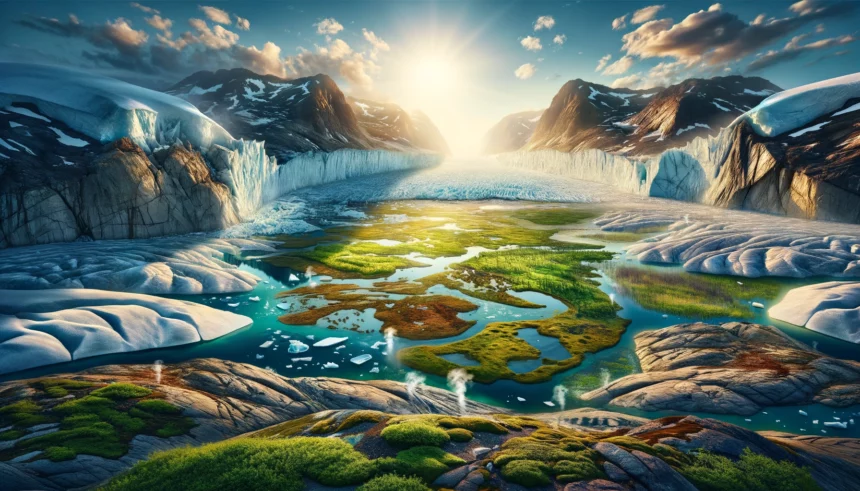A recent study highlights a concerning environmental transformation in Greenland, where vast areas of the ice sheet, once frozen, are now flourishing with plant life. This shift, documented since the 1980s, poses significant risks including enhanced greenhouse gas emissions, rising sea levels, and landscape instability.
Satellite data over the last three decades reveals that approximately 11,000 square miles of ice have melted, revealing barren rock, wetlands, and burgeoning shrub growth. This transformation has resulted in an area over twice the size of the initial vegetation coverage at the study’s outset, indicating a drastic change in Greenland’s ecological makeup.
The increase in vegetation, particularly the near-quadrupling of wetlands, is a notable concern due to its potential to emit methane, a potent greenhouse gas. Regions around Kangerlussuaq in the southwest and parts of the northeast have seen the most significant vegetation densification.
The study attributes these changes to warmer air temperatures, with Greenland experiencing heating rates double the global average since the 1970s. Recent years have seen air temperatures around Greenland soar to 3C higher than the late 20th-century averages.
Jonathan Carrivick, a co-author of the study from the University of Leeds, warns of a cascading effect where ice loss triggers further environmental shifts, leading to more ice retreat and the spread of tundra and shrub across the exposed rock. Additionally, melting ice is reshaping the landscape, moving sediment and forming new wetlands and fenlands.
Dr. Michael Grimes, lead author, emphasized the broader implications of these changes, noting their impact on coastal waters’ sediment and nutrient flow. The alterations hold significant consequences for Indigenous communities reliant on the stability of these ecosystems for traditional hunting. Furthermore, Greenland’s diminishing ice mass contributes to global sea level rise, presenting long-term challenges.
Researchers aim to use their findings to predict areas of Greenland facing accelerated changes, underscoring the need for ongoing monitoring and climate action.
















